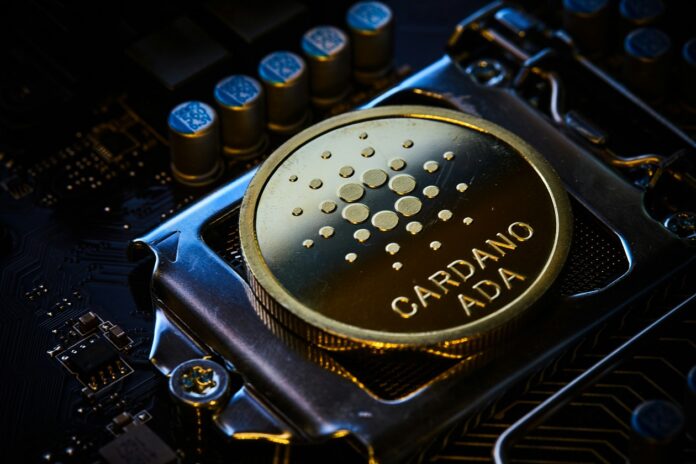Cardano’s been a coin that either gets worshipped or dismissed, depending on who you ask. Some see it as the clean, academic blockchain that’s building slow and steady with peer-reviewed papers and high-minded tech. Others see it as the project that talks big but always feels a step behind. Either way, ADA isn’t leaving the stage anytime soon, and 2026 is shaping up to be the year where it either levels up hard or gets left in the dust.
So let’s strip away the corporate polish and talk raw so we can make a close to reality ADA price prediction: what upgrades can we actually expect from Cardano in 2026, and are they enough to push ADA from promise to dominance?
The Scalability Push: Hydra Finally Coming Alive
We’ve been hearing about Hydra for years. It’s Cardano’s scaling solution, their answer to Ethereum layer-2s and Solana’s crazy transaction speeds. Hydra promises to let Cardano handle insane throughput by creating “heads” that process transactions off-chain and then sync back with the main chain. Translation? Fast, cheap, and scalable. 2026 is the year people expect Hydra to stop being a concept and start being a real engine. Because let’s be honest, Ethereum’s scaling game has moved forward, Solana’s been flexing its TPS numbers (when it’s not crashing), and even XRP is steady with payments. If Hydra can deliver the kind of transaction volume Charles Hoskinson’s been promising, think hundreds of thousands of TPS, then ADA can finally stop being the coin of “potential” and actually play in the big leagues.
But if Hydra keeps stalling? The critics will eat Cardano alive.
Smart Contracts That Don’t Feel Like Homework
One of the biggest knocks against Cardano has been its smart contracts. They’re functional, sure, but building on Cardano hasn’t exactly been developer heaven. The Plutus language is powerful but complicated, and while Ethereum devs can spin up apps in Solidity like second nature, Cardano devs often feel like they’re in a computer science lecture instead of building real-world tools. 2026 is the year where Cardano is supposed to make smart contracts smoother, easier, and friendlier. We’re talking updates that strip away the friction and let builders actually enjoy building. If they get it right, ADA might finally see the explosion of dApps it’s been promising since day one. If they don’t? Well, devs will just keep flocking to chains where things are easier, faster, and sexier.
Governance That Actually Works
Another thing Cardano never shuts up about? Governance. Voltaire, their system for on-chain governance, is supposed to turn ADA holders into real decision-makers, giving the community control over funding, proposals, and upgrades. It’s not just “decentralization” as a buzzword, it’s supposed to be a working democracy on-chain. In 2026, Voltaire is expected to level up. That means real treasury management, real voting power, and real accountability. If it delivers, Cardano could become the first chain where governance isn’t just tokenomics fluff, but actual shared control. That’s a big differentiator in a space where too many projects still run on “decentralized in name only” leadership. But let’s be real: governance is messy. People don’t always vote with logic; they vote with emotion, self-interest, or whatever’s trending. So the challenge will be whether Cardano’s community can wield that power without turning the chain into a political circus.
Sidechains and Interoperability
Here’s the quiet flex Cardano’s been working on: sidechains. Instead of trying to cram everything onto one main chain, Cardano’s approach is modular, spin off specific use cases into sidechains that talk back to the main network. That means Cardano can stay clean and secure, while experiments happen in their own playgrounds. By 2026, we’re expecting to see this ecosystem of sidechains really flourish. Think of chains specialized for identity, chains specialized for gaming, chains optimized for stablecoins, all running parallel but feeding back into the ADA core. That’s not just tech; that’s ecosystem growth, the kind of thing that keeps a chain alive when hype fades.
Interoperability is another piece of the puzzle. Cardano knows it can’t live in a vacuum. It needs to talk to Ethereum, it needs to talk to Bitcoin, and yes, it needs to connect with TradFi rails too. The push for bridges and interoperability upgrades in 2026 is about making ADA not just a walled garden, but a player in the bigger digital economy.
Identity Solutions and Real-World Use
One area where Cardano’s been making noise is digital identity. Projects like Atala PRISM are meant to give people, especially in developing regions, the ability to prove who they are without relying on fragile paper systems or corrupt institutions. By 2026, we should see these identity solutions go from pilot programs to real deployments. If they pull it off, Cardano won’t just be another DeFi playground, it’ll be the chain that governments, schools, and businesses actually use to solve real-world problems. That’s a lane most altcoins can’t touch, and it could be ADA’s ace in the hole.
Energy Efficiency as a Selling Point
Proof-of-stake is already a win for Cardano compared to Bitcoin’s energy drain, but in 2026, with ESG narratives stronger than ever, Cardano’s ability to flex its green credentials will matter even more. Expect upgrades and partnerships that double down on sustainability because in the global market, eco-friendly isn’t just a nice-to-have, it’s a survival trait.
The Elephant in the Room: Competition
None of these upgrades exist in a vacuum. Ethereum keeps evolving, Solana keeps speeding up, XRP has its payments game locked, and new chains are popping up every year claiming to be “faster” or “cheaper.” So for Cardano, 2026 isn’t just about upgrades, it’s about survival. These improvements have to land, because if they don’t, ADA risks being the eternal promise coin: always about what’s coming next, never about what’s happening now.
The Bottom Line
Cardano in 2026 stands at a crossroads. Hydra needs to deliver scalability. Smart contracts need to stop being a headache. Governance needs to show it’s more than theory. Sidechains and interoperability need to prove Cardano can play nice with others. Identity solutions need to step into the real world. And all of it has to happen in the shadow of competitors that aren’t slowing down.






